| Vintage Pulp | Sep 21 2020 |

There are worse fates than being Shanghaied by Hayworth.
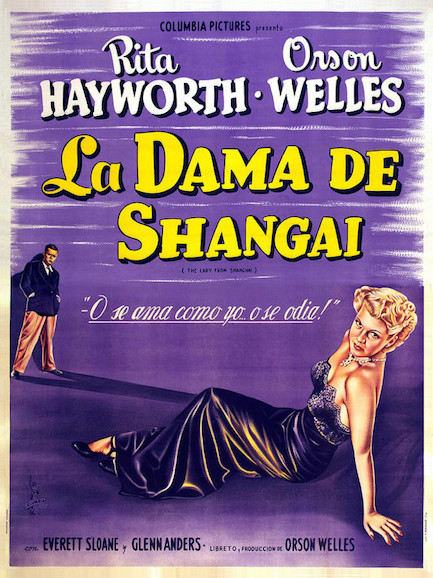
This beautiful poster was made for Argentina to promote the film noir The Lady from Shanghai, which starred Rita Hayworth and Orson Welles. There's no official Argentine premiere date, but since the movie reached Mexico in April 1948 and Uruguay in July 1948, it's a reasonable bet that it hit Argentina sometime during the summer of that year. Read a bit about the film here.
| Vintage Pulp | Mar 11 2020 |

Famed director ends up with too many cooks in his kitchen.
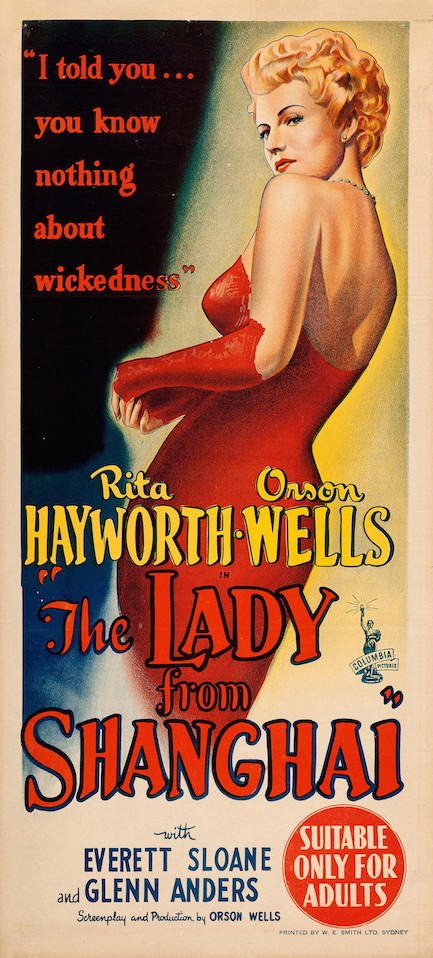
The film noir The Lady from Shanghai, starring Hollywood icons Rita Hayworth and Orson Welles, and directed by Welles, premiered in 1947 but reached Australia today in 1948, with this stunning promo poster having been distributed Down Under to help attract audiences. This film had amazing promos in many countries, some of which we'll show you later, and they all spelled Welles' last name correctly, which this one didn't. All the brilliant poster work around this movie is ironic, because Harry Cohn, who was the shot-caller at Columbia Pictures, hated it. He even shelved the flick for a year while he waited for what he deemed to be the best date to release it. When he finally did, what audiences saw was a radically altered version of Welles' original edit.
What did Cohn specifically hate about the film? Foremost there was its length, which was 155 minutes, and which Cohn ordered condensed, with the final running time coming to a mere 88 minutes. He also felt Hayworth didn't have enough close-ups, so he had those shot during extensive re-takes. Hayworth also didn't have a song, which was standard for film noir leading ladies, so Cohn had a number added and had Hayworth's voice dubbed. He hated the lighting, which he felt was a negative result of Welles choosing location work over controlled studio conditions. And he especially hated that Hayworth had agreed to chop off her auburn hair and dye it platinum. The list goes on but you get the point—clashing creative visions. Nothing new in Hollywood.
The Lady from Shanghai finds Welles playing a typical film noir schmo who falls in love with a femme fatale and is drawn into a murder plot. Other familiar film noir tropes include a trip to Mexico (not in the original novel by Sherwood King) and a tense court showdown. But what's decidedly uncommon here is Welles' visual mastery of the cinematic form. His abilities there have been exhaustively discussed and are in no way overrated, but visuals are only part of the filmic equation. There's also narrative pace and story cohesion and emotional tone, and those are areas where the movie runs into a bit of trouble. Since Welles' cut was so much longer (and presumably better) than what has ever been seen by the public, many of those problems were probably introduced by clumsy third parties.
But we can only judge what we see. Since all that missing footage is thought to have been destroyed, it takes a major leap of faith to see a masterpiece in what Welles himself thought was a diced up travesty of his original vision. We don't understand how anyone can truly revere him, yet disregard his artistic opinion. But that's exactly what some contemporary film writers do. We recently read a review that discussed how well the visuals and music work together, but Welles hated the score, which he had no control over and which lacked the subtlety he wanted it to have. We suggest that a critic is trying way too hard when they lavish praise upon a director for something he didn't even do. Welles was a genius—agreement on that point is universal. But even geniuses are not so magical that their abilities can overcome the artistic myopia and careless scissors of studio heads.
The Lady from Shanghai received mixed reviews when released, and ultimately, those reviews strike us as fair. There's plenty here worth seeing, particularly the ravishing Hayworth and nice location work in Acapulco and Sausalito, and of course Welles makes shots like Steph Curry makes 3s. But even so, the final result is good but not great. Not a failure, but not a top notch film noir. Calling The Lady from Shanghai one of the best of the genre is just unfair to the many, many great noirs that were made. Still, if you're a noir fan you should see it. And we're confident you'll enjoy it like we did. On the other hand, if you've never watched a film noir and this happens to be first one you see, we can easily picture you giving a shrug and drifting away from the genre, never to return.
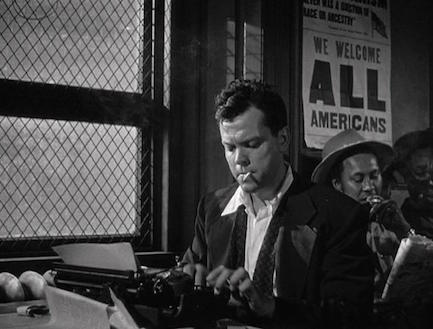
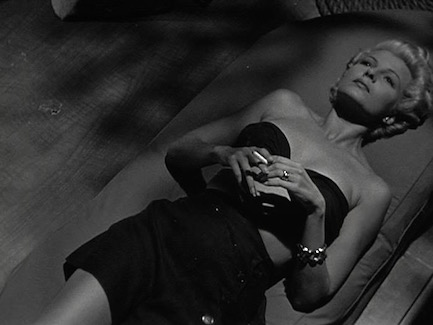
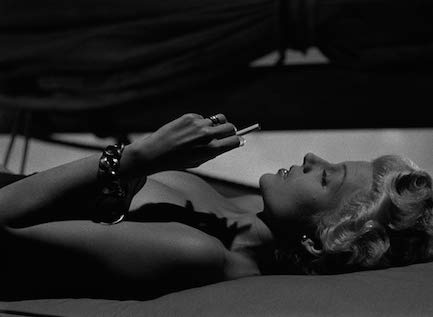
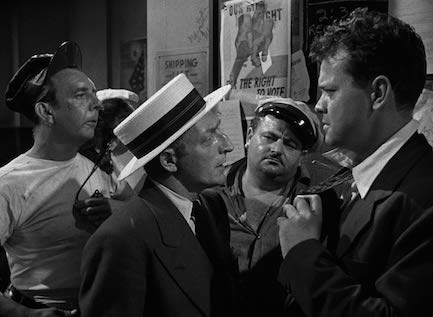
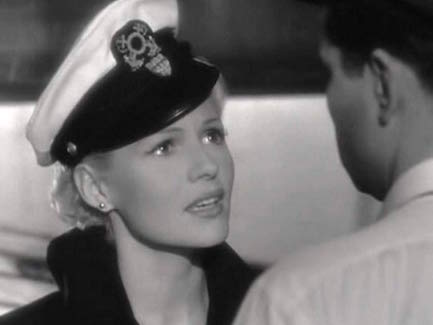
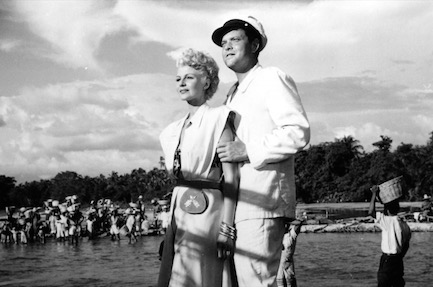
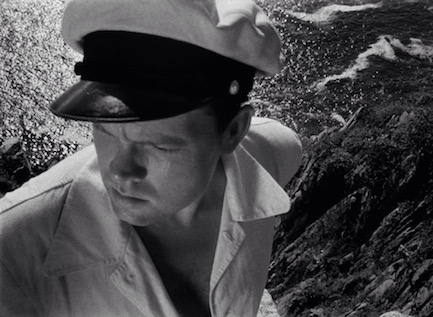
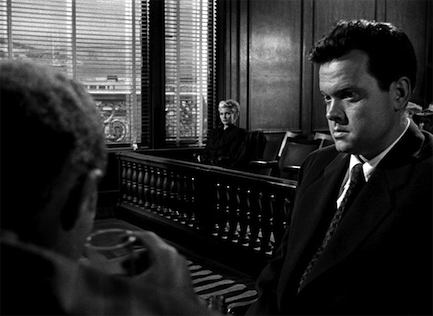
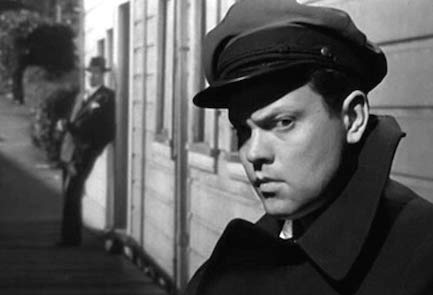
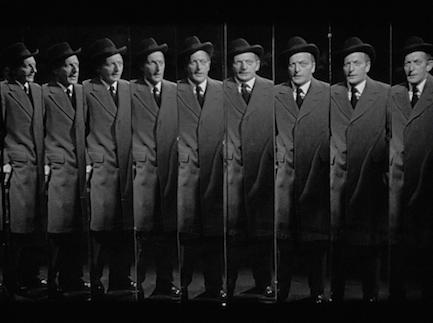
| Femmes Fatales | Apr 6 2018 |

I shot my alarm clock. After years of abuse it was long overdue.
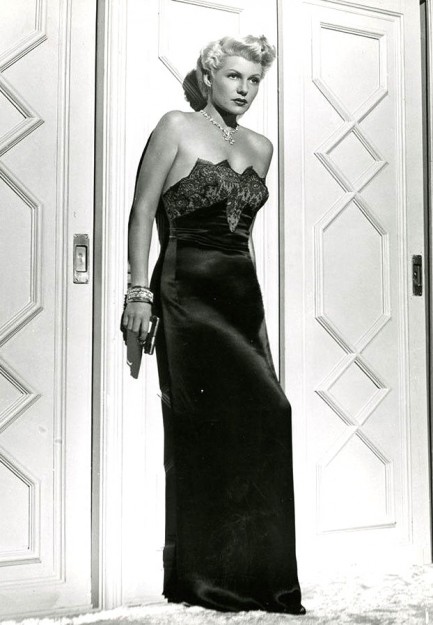
Above, a nice image of a nightgown clad, gun accessorized Rita Hayworth in her rare platinum blonde incarnation. The photo was made as a promo for her film noir The Lady from Shanghai, 1947.
| Femmes Fatales | Oct 12 2015 |

It’s good to be top of the heap.
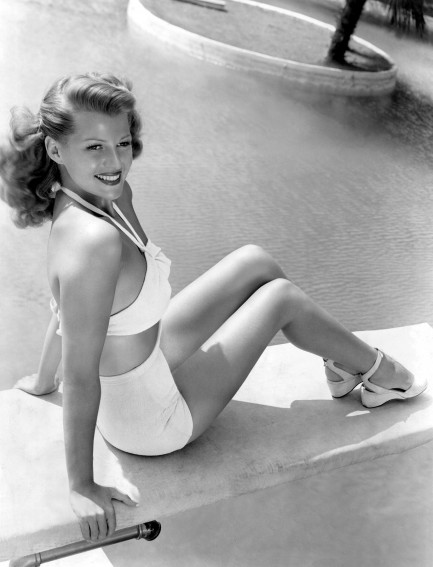
Above, the iconic Rita Hayworth, star of such films as the incomparable Gilda, as well as The Lady from Shanghai, Cover Girl, and the musical You Were Never Lovelier, seen here looking comfy at the height of her fame in a photo made at her home, by her rather astonishing pool with its central island and palm tree, in 1945.
| Vintage Pulp | Oct 14 2009 |

Orson Welles makes a run to the border.
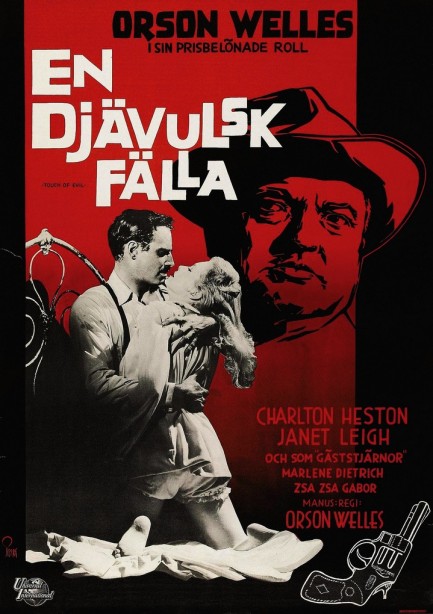
It has the most famous one-take tracking shot in cinema history, it’s the last of the official film noirs (unless you’re one of those Kiss Me Deadly purists), and it was directed by distinguished filmmaker Orson Welles. It was called Touch of Evil, and above you see its moody Swedish laguage poster. Though the film has its flaws, the technical prowess on display is indisputable. At this point film noir was a well-charted phenomenon in which Welles had already dabbled when he made Lady from Shanghai and The Stranger. This time out, he wanted to fully explore the possibilities of shadow the way a painter might explore the possibilities of oils. Everyone knew black-and-white was on the way out. Touch of Evil was Welles’ commentary on the style. He was showing the world what was possible, and by extension, what might be impossible using color.
The casting of Charlton Heston as Ramón Miguel Vargas has been thoroughly discussed pretty much everywhere, and those criticisms are understandable. Certainly, an actor such as, say, Ricardo Montalbán would have shone where Heston merely sufficed, but 1958 audiences would have disliked lily white Janet Leigh being hooked up with an actual Latino actor. People overlook that when they criticize Heston's casting. Welles made a racial statement by swapping the ethnicities of the central couple from Whit Masterson's source novel, in which the cop was white and his wife was Mexican. That's as far as he was willing to go. Cinema mirrors the age in which it was produced. It’s okay to use our modern world as a prism through which to examine the circumstances around an old film, but it’s best do so respectfully, because somewhere in the future people with their own prisms will be looking upon our age, and it won’t look so good to them. Touch of Evil played in Sweden for the first time today in 1958.
The casting of Charlton Heston as Ramón Miguel Vargas has been thoroughly discussed pretty much everywhere, and those criticisms are understandable. Certainly, an actor such as, say, Ricardo Montalbán would have shone where Heston merely sufficed, but 1958 audiences would have disliked lily white Janet Leigh being hooked up with an actual Latino actor. People overlook that when they criticize Heston's casting. Welles made a racial statement by swapping the ethnicities of the central couple from Whit Masterson's source novel, in which the cop was white and his wife was Mexican. That's as far as he was willing to go. Cinema mirrors the age in which it was produced. It’s okay to use our modern world as a prism through which to examine the circumstances around an old film, but it’s best do so respectfully, because somewhere in the future people with their own prisms will be looking upon our age, and it won’t look so good to them. Touch of Evil played in Sweden for the first time today in 1958.




































































